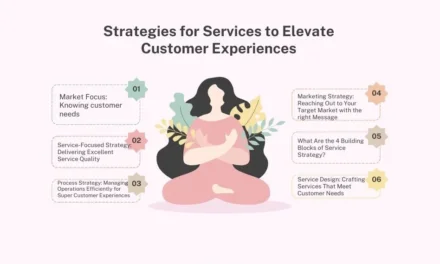Effective channel management will go a long way in helping businesses optimize the processes of selling and reaching wider markets. Be it managing the relationship with channel partners, optimizing the multi-channel sales strategy, or using technology to attain better channel efficiencies, a proper strategy will certainly pay dividends in your sales on a significant scale. In this blog, we take a closer look at the top 10 channel management strategies to grow sales in the USA and try to provide insight into how each of those could help you reach your business goals.
Table of Contents

1. Understanding Channel Management: Definition and Importance
What is Channel Management?
Channel management involves a coordinated control process of the ‘how’ a product or service reaches the customer. It could be within direct channels, say, one’s own sales force, or indirect channels: distributors, retailers, and, even today, e-commerce players.
Channel Management Definition
Channel management, in simple terms, refers to the way a company coordinates and organizes the various distribution channels through which its range of products or services is sold. It involves deciding on appropriate channels, optimizing the selected channels, and maintaining good relations with channel partners.
Why Is Channel Management Important?
Effective channel management is needed since it will have a direct attachment to the ability of an organization to reach its target market and deliver a good customer experience to be able to achieve sales. With an optimized channel strategy, businesses are guaranteed that their products or services are available to customers when and where they need them.
What Are the Functions of Channel Management?
Key channel management roles include the selection of appropriate channels, managing channel partner relationships, monitoring and optimizing channel performance, and ensuring alignment with the company’s total marketing and sales strategy.
2. Choosing the Proper Channels for Your Business
What is Channel Management Decisions?
One of those steps to initiate the effective management of your channels is through informed decisions about which particular channels you will use. These must be guided by a deep understanding of your target market, the nature of your products or services, and your overall objectives of the business.
Channel Management Examples
For example, a technology company can sell its products directly through its website and indirectly through retail outlets or third-party e-commerce sites. Multiple channels would help the company reach more customer segments and evoke sales.
Types of Channel Management
There are variants of channel management strategies, including single-channel management, where the company concentrates resources on one major sales channel, and multi-channel management, which involves the use of a number of channels simultaneously. Which to deploy would, therefore, be dictated by the nature of the business and its target market.
3. Formulating an Appropriate Channel Management Strategy
What is a Channel Management Strategy?
The strategy of channel management identifies the way a business will develop and manage its selling channels to maximize its reach and efficiency. This involves decisions on investment in channel mix, resource allocation, and relation building with channel partners.
Channel Management Process
The channel management process typically includes five prime steps: market analysis, selection of the right channels, management of channel partners, monitoring channel performance, and making necessary adjustments in the light of better strategy.
Importance of Channel Management Strategy
A clear channel management strategy helps align all the channels to the overall sales and marketing objectives of the company. It helps identify the best channels, efficient use of resources, and handle the complexities of multi-channel distribution.
4. Building Stronger Relationships with Channel Partners
Managing Channel Partner Relationships
Channel partners are those who help a company in selling its products through distributors, retailers, or agents. For effective channel management, good relations should be developed and fostered.
Channel Management Involves Communication
Communication is the basis of managing relations through channel management. This is inclusive of updating on a regular basis, setting expectations, and having lines of communication open to take down issues as and when it arises.
Channel Management Tools for Relationship Management
This kind of channel management tool and software will facilitate communications and manage the relationships between the direct organization and its channel partners. In this regard, channel management tools may keep track of the interactions with channel partners, monitor the performance of those interactions, and analyze further insights to make informed decisions.
5. Leveraging Technology for Channel Optimization
What is a Channel Management Tool?
Channel management tools are software applications that let your business better distribute through channels. In those cases, they can also be utilized to automate processes, extract data in real time, and therefore work towards optimizing your channel strategies.
Examples of Channel Management Software
Examples of channel management software include PRM systems, CRM systems, and e-commerce with integrations across a variety of sales channels. These tools enable a business to competently manage channels and make it more effective.
How Does Channel Management Work with Technology?
It is with this critical technology utilization in modern channel management that business firms can monitor and analyze channel performance, make data-driven decisions, and further optimize their channel strategy to realize better results.

6. Channel Performance: Monitor and Analyze
Channel Management System-Monitor
The performance monitoring of channels is of vital importance, as this would help figure out how the various channel strategies pay off and where the room for improvements exists. The system for managing the channels can grant functionality to track key performance indicators, which include sales volume, customer satisfaction, and profitability of the channel.
What Are Five Steps of Channel Management Process?
Five steps in the channel management process would include:
- Analysis of Market Needs: This recognizes the needs of your target market and how they would wish to buy your products or services.
- Choosing the Best Channels: The best channels that will serve your target market must be identified.
- Relationship Management: Relationships with the channel partners should be fostered and nurtured.
- Performance Appraisal: Regularly monitor and analyze channel performance through channel management tools.
- Making Improvements: Channel strategies are continuously optimized based on the findings of channel performance.
Importance of Channel Monitoring
Monitoring channels is important to ensure that your strategies are working and those channels add up to your business goals as a whole. Regular monitoring, therefore, offers the possibility of finding problems in time and readjusting for better performance.
7. Align Channel Management with Sales and Marketing
Channel Management in Marketing
Channel management is closely related to marketing since the selection of channels impacts the effectiveness of marketing in many ways. For example, channel strategies must be developed in conjunction with marketing campaigns in order to deliver a coherent message and reach potential customers more effectively.
Channel Management Decision in Marketing
The channel management decisions relate to the selection of appropriate channels for the promotion and sales of your product or service and identifying the way resources are allocated across the different channels. These decisions need to be done based on a very good understanding of your target market and competitive landscape.
Channel Management Meaning for Sales Teams
In as much detail as can be afforded, to the sales team, channel management is about close collaboration with the channel partners in closing sales and the attainment of business objectives, including laying out clear sales targets, training, and support for channel partners right down to ensuring all channels work in concert.
8. Integrating E-commerce into Your Channel Strategy
E-commerce as a Channel
The uprise of the internet and enabling technologies have developed e-commerce as an increasingly significant sales channel to a majority of the businesses today. Integrating e-commerce into your channel strategy allows you to reach a wider audience and also provides customers with convenience in buying your products or services.
Channel Management Examples for E-commerce
The best example of channel management in e-commerce is the commerce platform integrated with your own website, third-party marketplaces, and social media into one place. That way, you can easily track sales, inventory, and customer interactions across multiple channels using just that one platform.
Importance of Multi-Channel Integration
E-commerce integrated with other sales channels means that customers will see no difference in experience, no matter what way they want to get in contact with your brand. This will obviously help to develop a multi-channel approach that can increase the numbers by providing customers with more channels to buy products or services from you.
9. Channel Management for an Improved Customer Experience
Customer Experience and Channel Management
Providing a great customer experience is tied to brand loyalty and repeat sales. Channel management ensures that customers have a consistent and positive experience across all channels.
What Is an Example of Channel Management in Customer Experience?
Channel management that enhances customer experience would include the instance when an organization offers consistent pricing, promotion, and service levels across all the channels of sale. This will ensure consistency in service for customers whether they shop online, in-store, or from a third-party retailer.
Channel Management to Enhance Customer Experience
The care taken in handling your channels, and aligning all the touchpoints, results in more seamlessness and satisfaction in customer experience. This can further result in better customer satisfaction, enhanced sales, and more brand loyalty.
10. Continuous Improvement and Adaptation
The Need for Continuous Improvement in Channel Management
Business is constantly changing, so channel management strategies must also concurrently alter to meet the newest trends, technologies, and evolving customers. Continuous improvement for competitive advantage requires an organization to focus on constant improvement and adaptation to new developments that allow opportunities for marketplace differentiation and sales enhancement.
How to Implement Continuous Improvement
Regularly revisit and analyze your channel performance data for any weaknesses. Keep up-to-date on new technologies and market trends which may impact your channel strategies. Be open to change and trying new approaches in a quest for optimization and more sales.

Future Channel Management Decisions
In your future outlook, begin to consider emergent technologies such as artificial intelligence, machine learning, and automation-in their impacts on your channel management strategies. The sooner you stay abreast of current trends, the greater the likelihood that you will have the competitive advantage to sustain your sales growth.










